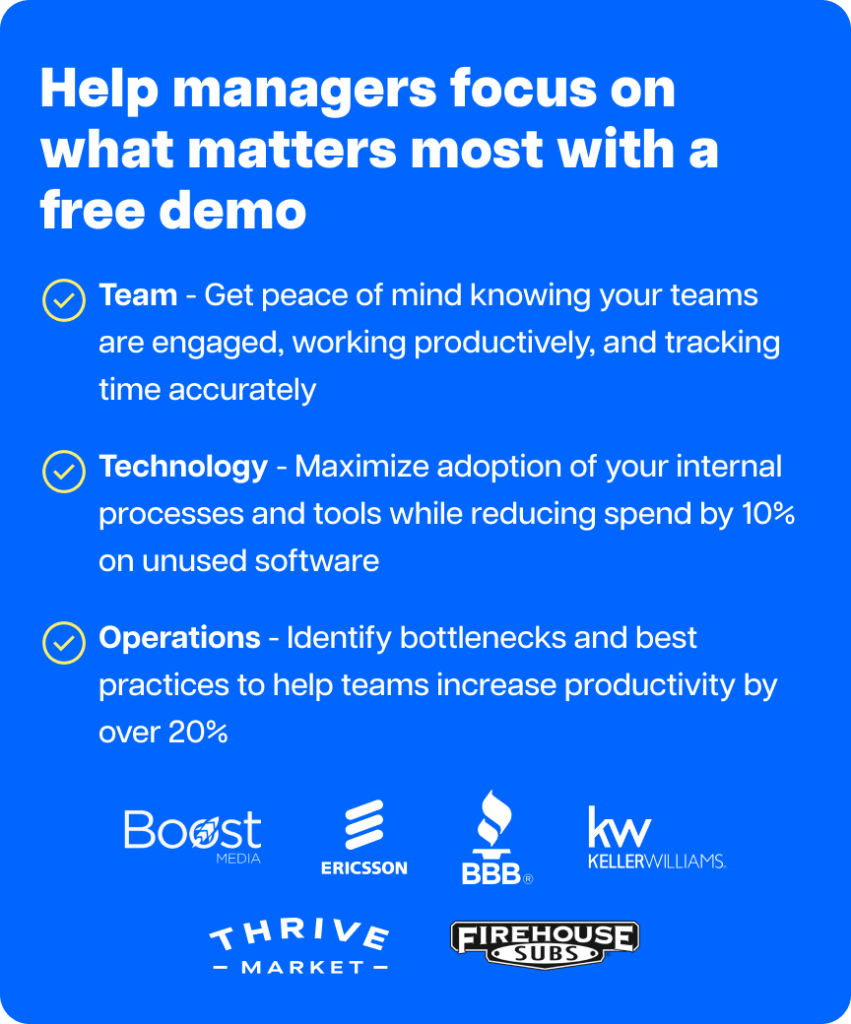In 2023, the average salary in Romania is 8,980 RON (Romanian leu, the Romanian national currency) per month or 108,000 RON per year. That’s approximately 2,008 USD per month, according to the exchange rates in May 2023.
These are approximate figures that can change depending on several factors like education, city, age, gender, and work experience.
But one thing’s for sure.
The average Romanian salary is significantly lower than average salaries in the United States (7,900 USD per month) and the United Kingdom (8,035 USD per month).
This makes Romania a preferred outsourcing destination.
In this article, we’ll take a detailed look at the average salary in Romania, average salary increments, and minimum wage. We’ll also discuss the top reasons to outsource to Romania and highlight the top outsourced industries in the country.
Table of Contents
- The average salary in Romania
- Salary comparison in Romania
- The average annual salary increment in Romania
- The minimum wage in Romania
- 3 key reasons to consider outsourcing to Romania
- Top 3 industries to outsource to Romania
Let’s begin.
The average salary in Romania
According to Salary Explorer, Romania’s average salary is 2,008 USD or 8,980 RON per month, as per the exchange rates in May 2023.
This national average wage gives you a peek into Romania’s standard of living.
However, key indicators like the median salary and the average salary range can give you more detailed insights into the salary data.
A. Median salary
Romania’s median salary is 8,130 RON per month (approx 1,818 USD).
This figure implies that half the Romanian population earns less than 8,130 RON every month, while the other half earns more than 8,130 RON per month.
Wondering how the median salary value differs from the average salary?
The median salary is the middle value between all the salaries considered. Meanwhile, the average salary divides the sum of all salaries by the number of salaries considered.
For example, employee A earns 2,000 RON, employee B earns 3,000 RON, and employee C makes 5,000 RON. In this case, the average salary is 3,333 RON, whereas the median salary is 3,000 RON.
B. Average salary range
The average salary range in Romania extends from 2,270 RON per month (508 USD) to 40,100 RON per month (8,966 USD).
Note that the average salary range only considers salaries falling between the average lowest salary and the average highest salary in Romania.
As a result, the actual maximum salary in Romania may be higher than 40,100 RON per month.
C. Average gross salary and net salary
Gross salary is the monthly or yearly salary before any deductions, such as income tax.
That’s why the average salary of 8,980 RON (2,008 USD) per month is also the average gross salary in Romania.
The net salary refers to the salary one takes home after all mandatory deductions.
With the country’s taxes being high, the average net salary in Romania was 3,483 RON (779 USD) in 2021.
These key salary data points can give you insights into Romania’s economy and population.
Salary comparison in Romania
It’s relatively easy to determine a country’s average income.
But what you actually pay an employee depends on several variables.
These variable factors include profession, education, work experience level, working hour requirements, location, and more.
We’ll compare Romanian average salaries based on each one of these key parameters.
A. Salary comparison by profession
The average salary in Romania can vary drastically across industries like software development, manufacturing, customer service, etc.
Even within these industries, the average salaries differ based on an employee’s job profile and the type of job (full-time, part-time, freelance, etc.).
Here’s a look at the salary comparison across different professions in Romania (full time employees):
| Profession | Average Romanian Salary (per month) |
| Chief Executive Officer | 10,000 RON |
| Program Manager | 7,000 RON |
| Healthcare Worker/ Consultant | 5,833 RON |
| Project Manager | 6,000 RON |
| Research Scientist | 9,000 RON |
| Data Scientist | 6,500 RON |
| Human Resources Manager | 8,650 RON |
| Accountant | 3,675 RON |
| Software Engineer/Programmer | 7,000 RON |
| Data Analyst | 3,050 RON |
| Java Developer | 6,000 RON |
| General Manager | 5,000 RON |
| Legal Advisor | 3,500 RON |
| Journalist | 2,900 RON |
| Interior Designer | 3,500 RON |
| Income Tax Officer | 6,577 RON |
| Content Writer | 2,500 RON |
| Teacher | 2,650 RON |
| Real Estate Agent | 3,000 RON |
| Data Entry Operator | 1,150 RON |
Source: glassdoor.com

B. Salary comparison by education
In most countries, you can earn a bigger paycheck with higher education. The scenario is pretty much the same in Romania.
A salary survey by salaryexplorer.com reveals that:
- A respondent with a certificate or a diploma earns 17% more than their peers without high school graduation.
- Employees who have secured a Bachelor’s Degree earn an average of 24% more than those with only a certificate or a diploma.
- Similarly, employees with a Master’s Degree make an average of 29% more than those with a Bachelor’s Degree.
- Ph.D. holders earn higher salaries that are approximately 23% more than employees with a Master’s Degree for the same job role.
Note: Salary estimates largely depend on the different job locations and the chosen career field.
C. Salary comparison by experience
Like anywhere else in the world, Romanian employees can expect to see a salary increase with an increase in their work experience level.
Here’s an approximate breakdown of how Romanian salaries increase with increasing employee work experience:
| Number of Years of Experience | Average Increase in Salary |
| 2-5 years | +32% |
| 5-10 years | +36% |
| 10-15 years | +21% |
| 15-20 years | +14% |
| 20+ years | +9% |
Source: salaryexplorer.com
Note: Change in salary, in this case, varies drastically from one location to another and depends on the chosen career field. The data provided here is the combined average of different jobs.
D. Salary comparison by location
A Romanian employee’s salary can vary based on a particular job location.
Let’s now take a look at the average salaries in key locations across Romania:
| Location | Average Romanian Salary (per month) |
| Bucharest | 9,740 RON |
| Cluj Napoca | 8,960 RON |
| Brasov | 8,020 RON |
| Sibiu | 9,420 RON |
| Timisoara | 8,430 RON |
Source: salaryexplorer.com
If you plan on hiring a workforce in Romania, these salary comparisons can help you plan an employee’s gross salary as well as your compensation budgets.
Now that we’ve discussed the different determining factors of the national average salary in Romania, let’s discuss salary increments in the country.
The average annual salary increment in Romania
Across different industries, the average annual increment rate in Romania has seen a steady increase.
According to a report by PwC Romania, gross salaries in Romania’s private sector are expected to increase by an average of 8.11% in 2022, after rising by 8.94% in 2021.
Here’s a breakdown of the average increment Romanian employees can receive across various industries:
| Industry | Average Annual Salary Increment |
| Banking | 7% |
| Information Technology | 3% |
| Healthcare | 1% |
| Travel | 8% |
| Education | 4% |
| Energy | 5% |
Source: salaryexplorer.com
The minimum wage in Romania
A country’s minimum wage refers to the minimum base salary you’ll have to pay an employee per day.
According to Wage Indicator, the minimum wage for a full-time Romanian employee is 3,000 RON (671 USD) per month.
The minimum wage is calculated based on a fixed working hour requirement. Foreign nationals and foreign workers are also covered under this law.
Note: Aside from the minimum wage, the Labor Law in Romania requires employers to provide mandatory employee benefits, including:
- Sick leave of up to 183 days annually.
- Social security payments.
- Minimum termination notice period of 20 days.
Wondering how this compares to the national minimum wage in other European countries?
Let’s find out.
Minimum wage and average salary in Romania Vs. other EU countries
Here’s a breakdown of how the Romanian minimum salary and average monthly salary compare to other EU member countries:
| EU Member State | Minimum Wage Per Month | Average Salary Per Month | Average Salary Comparison to Romania (in %) |
| Romania | 671 USD | 2,008 USD | – |
| Belgium | 2,004 USD | 7,015 USD | 109% |
| France | 1,828 USD | 4,710 USD | 78% |
| Luxembourg | 2,574 USD | 4,740 USD | 78% |
| Malta | 903 USD | 5,277 USD | 87% |
| Netherlands | 1,968 USD | 5,575 USD | 92% |
| Germany | 2,001 USD | 4,352 USD | 71% |
| Austria | No statutory minimum wage | 4,333 USD | 70% |
| Denmark | No statutory minimum wage. | 6,681 USD | 69% |
| Ireland | 2,024 USD | 3,666 USD | 55% |
| Portugal | 938 USD | 3,141 USD | 41% |
| Estonia | 745 USD | 3,124 USD | 40% |
| Spain | 1,284 USD | 3,095 USD | 40% |
| Czech Republic | 729 USD | 2,863 USD | 32% |
| Slovakia | 736 USD | 2,490 USD | 18% |
| Croatia | 716 USD | 2,243 USD | 8% |
| Slovenia | 1,225 USD | 2,250 USD | 8% |
Source: salaryexplorer.com
Romania has one of the lowest minimum wage amongst other European countries.
If these salary trends aren’t promising enough, there are more reasons why you should consider outsourcing to Romania.
3 key reasons to consider outsourcing to Romania
Here’s why Romania can be the perfect outsourcing destination for your business:
1. Highly educated and skilled talent pool
Romania is home to some of the world’s best computer science and technical universities.
The education ecosystem has resulted in students graduating with advanced IT (Information and Technology) and software developing skills.
The Polytechnic University of Bucharest, Babes-Bolyai University in Cluj Napoca, and the Polytechnic University of Timisoara, are some of the most important educational institutions.
2. Home to premier IT hubs
Over the last few years, Romania has gained popularity for its fast-developing IT hubs.
Bucharest, the country’s main IT hub, is the 16th largest IT hub in Europe. It houses talented software developers who specialize in various programming languages like Python, Java, and JavaScript.
Cluj Napoca, the other key IT hub, is dubbed the “Silicon Valley of Eastern Europe.” The thriving IT scene supports over 15,000 IT specialists and over 1,300 businesses.
3. Stable economic growth
Romania offers companies a stable economic condition to grow their businesses. The country has one of the fastest growth rates in the European Union.
Like the rest of the world, Romania’s economy was impacted by the COVID-19 pandemic. In 2020, the economy contracted by 3.9 percent, and the country’s GDP (Gross Domestic Product) per capita was 12,896.09 USD.
However, over the next two years, the country’s GDP growth is projected to remain strong, at about 4.5% in 2022 and 2023.
With these reasons in mind, let’s look at the top industries outsourcing to Romania.
Top 3 industries to outsource to Romania
You can outsource most non-core tasks to Romania. But here’s a closer look at some of the most popular ones:
1. Software development
Romania is one of the key players in the software outsourcing scene.
According to assessments made by HackerRank, Romania ranks 20th amongst countries that have the best developers.
Additionally, Romania makes the top three countries in Europe in terms of the number of software developers. The country holds 20% of the total IT&C employees from Central and Eastern Europe.
The availability of skilled developers and the resources provided by advanced tech hubs, make Romania a preferred destination for software development outsourcing.
2. Business Process Outsourcing (BPO)
The BPO outsourcing sector in Romania is noted for:
- English-language proficiency of the available workforce.
- Similar time zones to other EU and North American countries.
- Relatively low labor costs for an EU member state.
The Romanian BPO market now includes more than 250 companies, forming an estimated market of over 1.5 billion Euros (EUR).
3. Knowledge Process Outsourcing (KPO)
KPO includes outsourcing information processing in large volumes, used in several business activities, including:
- Financial and Investment research.
- Data Analysis and Interpretation.
- Research and Development.
Handling data in large volumes would require hiring a large specialized workforce. But because Romania has low average salaries, you can access these KPO services at nominal costs by outsourcing to the country.
Wrapping up
Although the average salary and minimum wages in Romania are steadily increasing, it’s still lower than most developed countries worldwide.
This lets you access a technically skilled talent pool and IT infrastructure at affordable costs, making Romania a popular choice for outsourcing.
Use the information in this article to understand the average salaries in Romania and determine if outsourcing to the country is the right move for your business.


